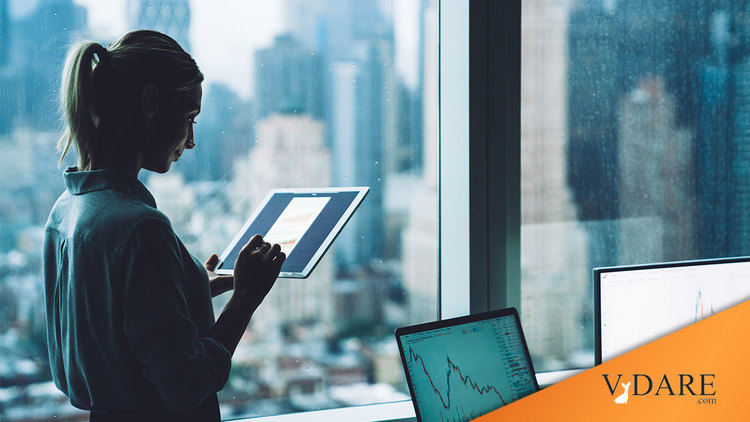When I majored in economics at Rice U. in 1976-1980, economists had all sorts of clever ideas for how firms could profit-maximize. But when I went to work in the market research business in the 1980s, I noticed that consumer packaged goods marketers and, especially, supermarkets didn’t exploit anywhere near all of their theoretical opportunities.
Why not? They didn’t have the data and it was too much work. So they mostly relied upon traditional rules of thumb.
In the mid-1980s, the firm where I worked introduced massive use of checkout laser scanner data to track supermarket sales. But even that didn’t make business extremely serious about profit maximizing.
When I called upon Walmart in the early 1990s, however, they were focused to a scary extent upon using every bit of information. But even Walmart three decades ago seemed more focused upon reducing inefficiency than in increasing exploitation of customers.
Similarly, when I played a role in introducing personal computers to my firm in the mid-1980s and the Internet in the mid-1990s, my orientation was toward reducing laboriousness rather than outsmarting our customers. Being a business-to-business firm, it was hard to outsmart the MBAs our MBAs were dealing with.
But, over time, computers have allowed firms to focus on being more clever than their customers.
From the New York Times business news:
The Case of the Missing Price Tags
Online shopping was supposed to give consumers more power and freedom. Instead, costs are so fluid that household goods fluctuate almost like Bitcoin.
By Daisuke Wakabayashi
Feb. 26, 2022, 5:00 a.m. ET
When a holiday toy catalog from Amazon arrived in the mail in late October, Krista Hoffmann noticed something amiss.
In 100 pages of Lego sets, princess castles, action figures and the impossible-to-find Sony PlayStation 5, the catalog presented just about everything — except the prices.
“At first, I thought I wasn’t looking close enough, so I flipped through a few more pages,” said Ms. Hoffmann, a stay-at-home mother of three children in Colorado Springs. “Then I realized, ‘Oh, this is intentional.’ Why would you not put the prices there?”
The absence of prices was not an oversight; it was the natural evolution of two decades of online shopping.
In the early days of the internet, there was breathless excitement that e-commerce would lead to greater price transparency, allowing shoppers to know exactly where to find the best deals. This was supposed to be good for consumers and bad for retailers forced to compete with one another in a profitability-killing race to the lowest prices.
That’s what economists would predict.
Unless you employ micro-economists to figure out how to outsmart broad brush economics. For example, in the late 2010s, Amazon was hiring about 50 Ph.D. economists per year.
Instead another reality has emerged: Shoppers are losing sight of what things cost.
Retailers have an incentive to shift the lens away from prices, dangling other carrots like convenience and ease of use. At the same time, shoppers are increasingly overwhelmed by the complexity of product options, prices, discounts and payment plans.
… All of this is happening on top of a system, pioneered by Amazon, that keeps prices in algorithm-fueled motion. …
“To the extent that there is more obfuscation going on, consumers pay more for everything,” said Glenn Ellison, adding that consumers also waste time hunting for deals or select an alternative that isn’t quite what they wanted. “For consumers, it is almost exclusively negative.” …
Amazon’s price for the Pokemon Celebrations Elite Trainer Box, a wish list item of Ms. Hoffmann’s 7-year-old son, seesawed in the weeks before Christmas. There were at least 14 changes since August, ranging from the suggested retail price of $49.99 to $89.99 in October. The average during that period was $67.12, according to Camelcamelcamel, which tracks prices on Amazon.
Discounts tied to loyalty programs or annual subscriptions like Amazon Prime and Walmart+ also complicate the math. At the same time, features meant to save time and enhance convenience, such as automated monthly deliveries of household goods, have made shoppers less price aware.
“The general playbook for the post-2000s with retail is that everything is about obfuscating prices,” said Jason Murray, who worked at Amazon for 20 years and is now chief executive of Shipium, an e-commerce start-up. …
According to a 2009 research paper by Amy Finkelstein, an economics professor at M.I.T., when people use cash less, prices go up.
In summary, I’d say that compared to 40 years ago, capitalists have gotten much better at capitalism.
In 1982, the Dow Jones Average was about 1000 and it only took a net worth of $75 million to make the Forbes 400.
Back then my politics were pretty ardently pro-capitalist.
Today, however, the DJA is about 34,000 and it takes $2.9 billion to makes the Forbes 400. So, my side in 1982 has won, hugely.
In consequence, my politics are now less pro-capitalist.
[Comment at Unz.com]













